Science meets architecture at the National Graphene Institute in Manchester
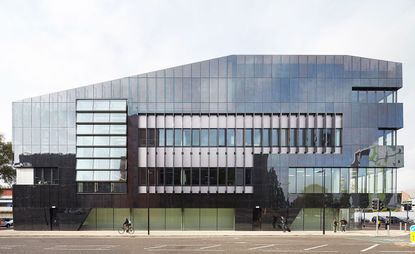
One doesn't have to look too far beneath the compact, modern façade of the new £61m National Graphene Institute to discover a thoughtful expression of the ideal that education and scientific research should be an open, transparent process.
Occupying a corner plot on the University of Manchester's science quarter (where graphene was first isolated in 2004, earning its founders the Nobel Prize in Physics six years later), the five-storey building was designed by London- and Prague-based Jestico + Whiles, while CH2M Hill helmed the design for the specialist labs.
The institute's ambitious goal to be a world-class research and incubator centre dedicated to the development of graphene - made from a single layer of atom carbons, the world's thinnest material is 200 times stronger than steel - is subtly and cleverly telegraphed on its double-layered facade. To wit, the inner layer is clad with weather- and thermal-proofed cladding, while an outer layer is constructed from 1,875 black mirror stainless steel panels, each of which contains thousands of perforations that make up the equations used in graphene research.
To achieve optimal vibration conditions, the main clean room is built into a lower ground floor, but rather than hide machinery and personnel in an artificially lit, enclosed bunker, the architects have cut through the side elevation to angle the ceiling upwards so that from the east-side street level, the public can look directly into the naturally-lit room and literally observe the ground-breaking work being done.
This unusual sense of openness is paired with a bent towards freewheeling creativity. Internal lab walls, for instance, are covered with black PVC that, with special chalk pens, double as blackboards.
Given the importance of the research project, the institute is, at around 8,000 sq m, relatively compact, but the space is well-used not least for its comprehensive suite of laser, optical, metrology and chemical labs, offices, a second clean room, and seminar room that opens onto a roof terrace and garden of grass and wildflowers.
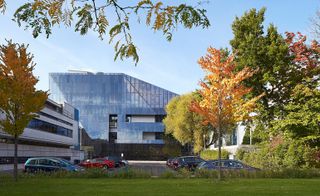
Its compact form is deceiving - the building includes ample space for research in an unusually transparent model

The structure's outer layer is made of 1,875 black mirror stainless steel panels, each of which contains thousands of perforations referring to the equations used in graphene research

The interior is bright and airy, while specialist labs were designed by CH2M Hill
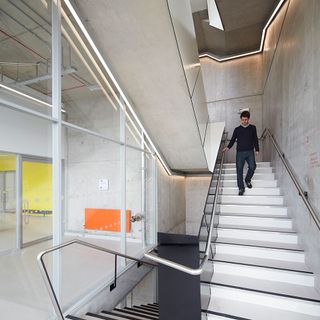
Given the importance of the research project, the institute is, at around 8000sqm, relatively compact
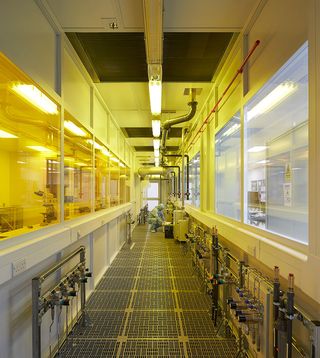
To achieve optimal vibration conditions, the main clean room is built into a lower ground floor
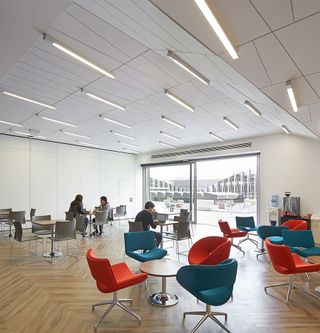
The five-storey building includes a comprehensive suite of laser, optical, metrology and chemical labs, offices, two clean rooms, and a seminar room that opens onto a roof terrace and garden of grass and wildflowers
INFORMATION
Photography: Hufton + Crow
ADDRESS
The University of Manchester
Booth St E
Manchester M13 9PL
Wallpaper* Newsletter
Receive our daily digest of inspiration, escapism and design stories from around the world direct to your inbox
Daven Wu is the Singapore Editor at Wallpaper*. A former corporate lawyer, he has been covering Singapore and the neighbouring South-East Asian region since 1999, writing extensively about architecture, design, and travel for both the magazine and website. He is also the City Editor for the Phaidon Wallpaper* City Guide to Singapore.
-
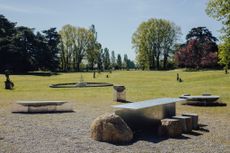 Alcova 2024 offers up contemporary independent design in historical domestic backdrops
Alcova 2024 offers up contemporary independent design in historical domestic backdropsAlcova 2024 moved to Varedo to take over the spaces of Villa Bagatti Valsecchi and Villa Borsani (on view until 21 April)
By Sujata Burman Published
-
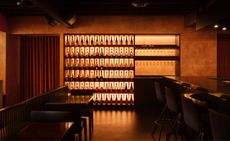 Ama Bar, in Vancouver, is sexy and a little disorienting
Ama Bar, in Vancouver, is sexy and a little disorientingAma Bar features ‘Blade Runner 2049’-inspired interiors by &Daughters
By Sofia de la Cruz Published
-
 Kembra Pfahler revisits ‘The Manual of Action’ for CIRCA
Kembra Pfahler revisits ‘The Manual of Action’ for CIRCAArtist Kembra Pfahler will lead a series of classes in person and online, with a short film streamed from Piccadilly Circus in London, as well as in Berlin, Milan and Seoul, over three months until 30 June 2024
By Zoe Whitfield Published
-
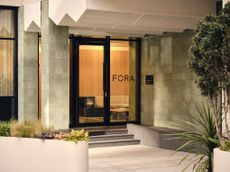 Henry Wood House’s postmodernist bones are refreshed by Nice Projects in London
Henry Wood House’s postmodernist bones are refreshed by Nice Projects in LondonNice Projects breathes new life into the Henry Wood House in London, offering ample flexible office spaces for modern workers
By Daven Wu Published
-
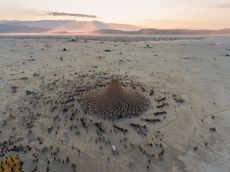 ‘Bio-spaces’ exhibition at Roca London Gallery celebrates biophilic design
‘Bio-spaces’ exhibition at Roca London Gallery celebrates biophilic design‘Bio-Spaces: regenerative, resilient futures’ opens at the Roca London Gallery as ‘a call to action to stop designing nature out’
By Clare Dowdy Published
-
 Don’t Move, Improve 2024: London’s bold, bright and boutique home renovations
Don’t Move, Improve 2024: London’s bold, bright and boutique home renovationsDon’t Move, Improve 2024 reveals its shortlist, with 16 home designs competing for the top spot, to be announced in May
By Ellie Stathaki Published
-
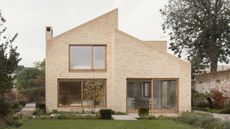 Timber-framed Wimbledon house is a minimalist, low-energy affair
Timber-framed Wimbledon house is a minimalist, low-energy affairA new timber-framed Wimbledon house is designed to blend into its traditional surroundings with a neat brick façade, careful massing and pared back interiors
By Jonathan Bell Published
-
 London Science Museum’s Energy Revolution gallery champions sustainable exhibition design
London Science Museum’s Energy Revolution gallery champions sustainable exhibition designThe Energy Revolution gallery opens at London’s Science Museum, exploring decarbonisation through sustainable exhibition design by Unknown Works
By Ellie Stathaki Published
-
 This South Downs house stands as a testament to the value of quiet refinement
This South Downs house stands as a testament to the value of quiet refinementAt one with the landscape, a South Downs house uses elements of quintessential country villas and midcentury gems with modern technologies
By Jonathan Bell Published
-
 Ash Tree House offers a contextual approach to a north London site
Ash Tree House offers a contextual approach to a north London siteAsh Tree House by Edgley Design is a modern family home in a north London conservation area's backyard site
By Ellie Stathaki Published
-
 In memoriam: John Miller (1930-2024)
In memoriam: John Miller (1930-2024)We remember John Miller, an accomplished British architect and educator who advocated a quiet but rigorous modernism
By Jonathan Bell Published